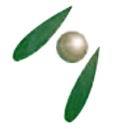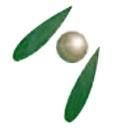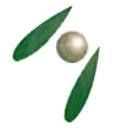
4-Aminobenzoic acid(CAS No.150-13-0),P-Aminobenzoic Acid, PABA
Product Details:
Product Description
Synonyms: 1-Amino-4-carboxybenzene; p-Aminobenzoic acid; PABA
Molecular Formula: C7H7NO2
Molecular Weight: 137.14
CAS Number: 150-13-0
EINECS: 205-753-0
PABA is a white crystalline substance that is only slightly soluble in water. It consists of a benzene ring substituted with an amino group and a carboxyl group.
PABA is an essential nutrient for some bacteria and is sometimes called Vitamin Bx. In humans, PABA is normally made by E-coli in the colon and therefore PABA from food is not normally essential to human health. PABA is therefore not officially classified as a vitamin. PABA is an intermediate in bacterial synthesis of folate. Although humans lack the ability to synthesize folate from PABA, that is also normally done by E-coli. PABA is sometimes marketed as an essential nutrient for use whenever normal PABA synthesis by intestinal bacteria is insufficient.
Symptoms of PABA deficiency may include scleroderma (hardening of skin), weeping eczema (moist eczema), skin infections, and patchy pigment loss in skin (vitiligo). Food sources of PABA include liver, brewer's yeast , kidney, molasses, and whole grains.
Specification
| Product name | P-Aminobenzoic acid |
| Item | Specification (USP30) |
| Appearance | White crystalline powder |
| Identification | Accord with test |
| Assay | 98.5-101.5% |
| Melting point | 186.0-189.0°C |
| Loss on drying | 0.2% Max |
| Residue on ignition | 0.1% Max |
| Heavy metals | 20ppm Max |
Packing: 25KG net fiber drum lined with plastic bag. The biggest manufacturer of PABA in China. Have the capacity of about 1200MT / year.
Storage: Stored in a dry and cool place, keep away from strong light and heat.
Shelf life: Two years when stored properly in a well-closed container.
Other Products in 'Dietary & Nutritional Supplements' category
 |
A & Z Group Co.,Ltd
All Rights Reserved.(Terms of Use) Developed and Managed by Infocom Network Private Limited. |
 English
English Spanish
Spanish French
French German
German Italian
Italian Chinese (Simplified)
Chinese (Simplified) Japanese
Japanese Korean
Korean Arabic
Arabic Portuguese
Portuguese





 Send Inquiry
Send Inquiry